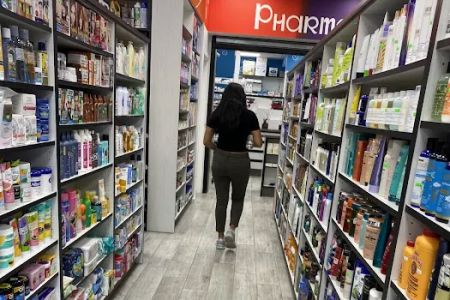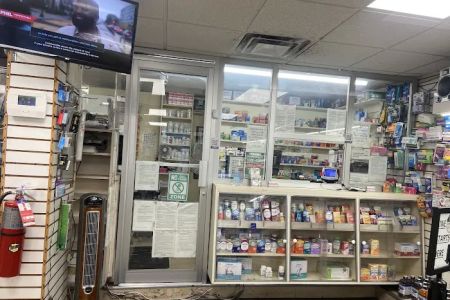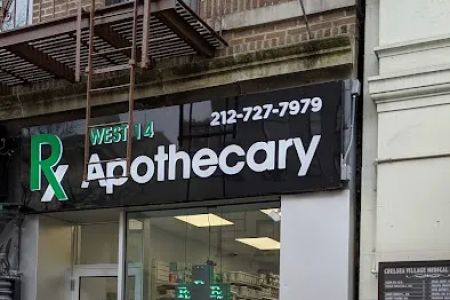Understanding Pharmacy Accreditation Standards in the USA
When it comes to ensuring the safety and efficacy of medications, pharmacy accreditation standards play a crucial role in the healthcare system. As a pharmacist myself, I’ve witnessed firsthand how accreditation standards shape the way pharmacies operate, ensuring they meet high-quality care requirements. In this article, I'll walk you through what pharmacy accreditation standards in the USA are, why they matter, and how they impact patients and pharmacies alike.
1. What Are Pharmacy Accreditation Standards?
Pharmacy accreditation standards are guidelines established by regulatory bodies to ensure that pharmacies operate efficiently, safely, and in compliance with best practices. These standards serve as benchmarks for pharmacy operations and are designed to maintain the integrity of the healthcare system. They focus on various aspects of pharmacy management, including safety protocols, the handling of medications, patient privacy, and the ongoing education of pharmacy staff.
In the USA, pharmacy accreditation is typically awarded by organizations such as the American Society of Health-System Pharmacists (ASHP) and the Joint Commission, both of which have strict criteria to evaluate the operations of pharmacies. These accrediting bodies ensure that pharmacies meet national standards, provide quality service, and maintain patient safety and confidentiality.
2. The Importance of Pharmacy Accreditation
Accreditation is vital for a pharmacy’s credibility. It guarantees that the pharmacy complies with all legal requirements and best practices to offer safe and effective healthcare services. For example, when a pharmacy is accredited, it means they have met certain safety criteria, which include proper medication storage, inventory control, and dispensing protocols. This not only ensures the safety of medications but also provides reassurance to patients that the services they are receiving adhere to high-quality standards.
In my experience, working at an accredited pharmacy often means continuous training, thorough inspections, and updates to practices. It’s not just about following rules—it’s about instilling a culture of excellence that promotes patient well-being. Without accreditation, pharmacies could face challenges in keeping up with evolving medical and safety standards, which could directly impact patient care.
3. Key Pharmacy Accreditation Standards in the USA
The process of pharmacy accreditation involves several critical standards that focus on different aspects of pharmacy management. Let’s take a closer look at some of the most essential ones:
1. Medication Management and Safety
One of the most important standards in pharmacy accreditation involves medication management. Pharmacies must have protocols in place to ensure medications are dispensed accurately and safely. This includes reviewing prescriptions for drug interactions, providing counseling to patients on how to use medications correctly, and implementing safety procedures to prevent errors in drug dispensing.
For instance, I remember a time when a patient came in with a prescription that, if filled incorrectly, could have resulted in serious side effects due to a known drug interaction. Because our pharmacy was accredited, we had systems in place to identify this potential issue and consulted with the prescribing doctor to adjust the medication. This is just one example of how accreditation ensures patient safety through rigorous medication management systems.
2. Staff Training and Competency
Accreditation also focuses on the training and competency of pharmacy staff. Pharmacies are required to ensure that their pharmacists and pharmacy technicians are properly educated and regularly participate in ongoing training. This ensures that they remain up-to-date with the latest developments in drug therapy and healthcare standards.
At my pharmacy, we’re required to complete various training programs each year to stay current on changes in pharmaceutical practices, new medications, and emerging health concerns. These programs enhance the quality of care we can provide to our patients, ensuring we’re equipped with the latest knowledge to help them make informed decisions about their health.
3. Patient Privacy and Confidentiality
Protecting patient privacy is a fundamental requirement in the healthcare industry, and it’s especially important in pharmacy practice. Accredited pharmacies must follow strict protocols to ensure that patient information is kept confidential, in compliance with the Health Insurance Portability and Accountability Act (HIPAA).
One time, a patient came in with a sensitive prescription, and I made sure to maintain confidentiality by discussing the medication in private, away from other customers. This kind of attention to detail is part of what makes an accredited pharmacy stand out—patients can trust that their personal health information will be protected.
4. Pharmacy Accreditation and Insurance Reimbursement
Pharmacies that are accredited are also more likely to be reimbursed by insurance companies for their services. Insurance companies prefer working with accredited pharmacies because they know these pharmacies meet specific quality and safety standards. This not only ensures that patients are receiving the care they deserve, but it also allows pharmacies to provide more accessible services through insurance coverage.
In my experience, being part of an accredited pharmacy network means that patients have fewer out-of-pocket expenses when filling their prescriptions. It ensures that their insurance will cover the majority of the cost, making medications more affordable and accessible.
5. The Process of Pharmacy Accreditation
Achieving accreditation is not an overnight process—it involves a comprehensive evaluation that looks at every aspect of pharmacy operations. Here’s how the process generally works:
Step 1: Self-Assessment
The first step for a pharmacy is to conduct a self-assessment to identify areas where they may need to improve to meet accreditation standards. This involves reviewing current practices, policies, and procedures to ensure they align with the accrediting body’s requirements.
Step 2: On-Site Survey
Once the pharmacy feels it meets the standards, an on-site survey is scheduled. During this survey, representatives from the accrediting body will visit the pharmacy, review documents, observe operations, and interview staff to ensure that all necessary protocols are in place and functioning properly.
Step 3: Continuous Improvement
After receiving accreditation, pharmacies are expected to maintain their high standards. This means engaging in ongoing quality improvement programs and being subject to periodic re-evaluations. Accreditation is not a one-time event but an ongoing process that ensures continuous adherence to the highest pharmacy standards.
Conclusion: Why Pharmacy Accreditation Matters
Pharmacy accreditation standards in the USA serve as a vital cornerstone in ensuring that pharmacies provide safe, efficient, and high-quality care to patients. These standards not only help protect patient health but also build trust in the pharmacy community. By adhering to these standards, pharmacies can ensure they remain at the forefront of pharmaceutical practice and continue to provide the best possible care for their patients.














